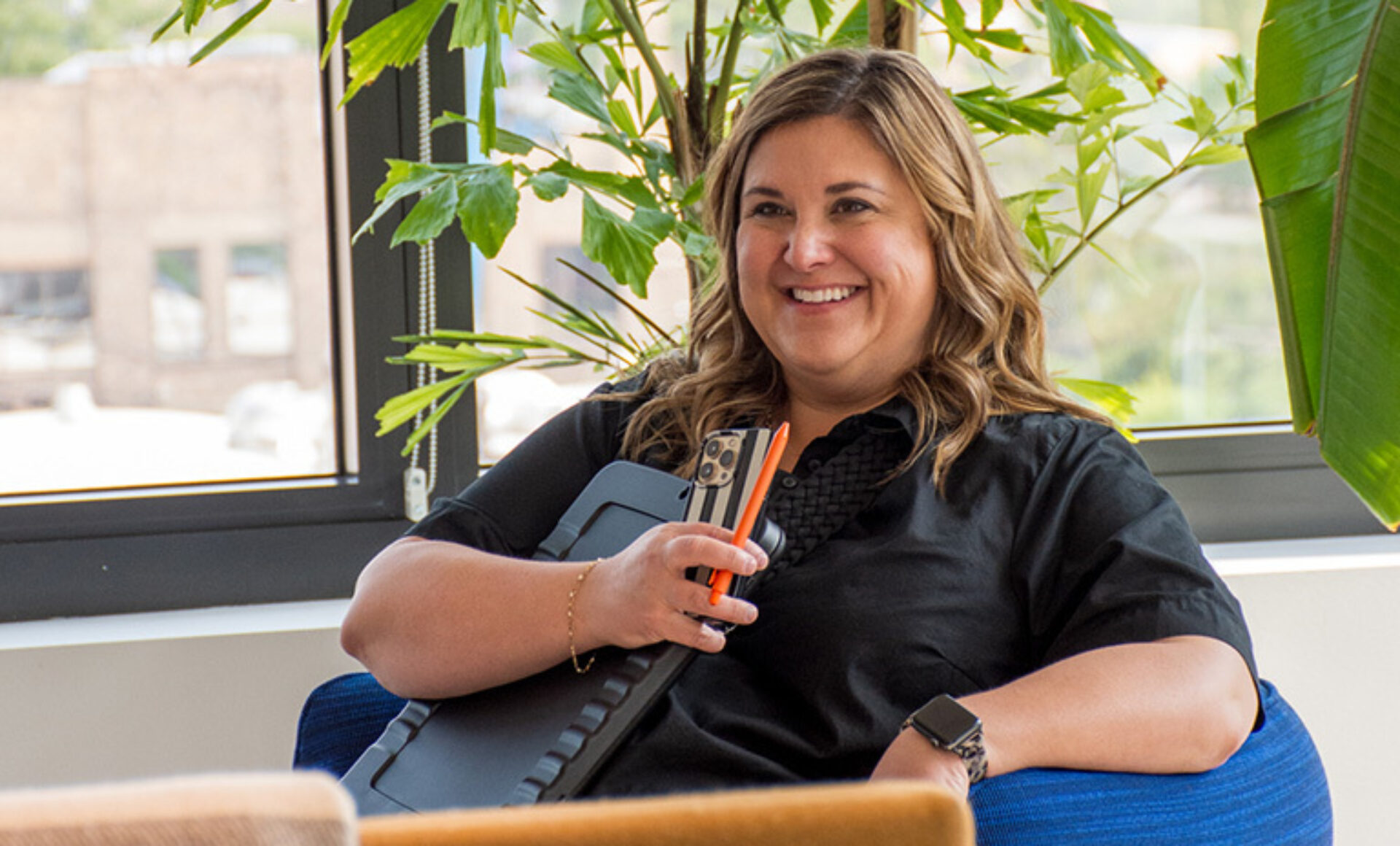You know that feeling you get whenever you see an excellent presentation — awe, understanding, maybe even a little envy? You might wonder how on earth the speaker managed to organize their thoughts so effectively, or how they communicated ideas with clarity and charm.
At work and beyond, good communication skills go a long way. And when you’re presenting — whether sharing concepts with a client or speaking at a conference — it’s massively important to be clear, compelling, and authentic. But like so many things in life, that’s easier said than done.
During a recent panel discussion moderated by IIDA’s Executive Vice President and CEO, Cheryl Durst, Hon. FIIDA, we unpacked the art of effective presentations.
Panelists included Jennifer Ruckel, Ind. IIDA, Vice President of Sales at Pinnacle Architectural Lighting; Derek Jayson Rusch, Ind. IIDA, National Relationship Manager at Infinium Walls; and Tim Wolfe, IIDA, Global Interiors Design Director at Perkins&Will.
Now, we’ve distilled their conversation into five takeaways. Below you’ll find advice from Cheryl and the above design leaders, all of whom are well versed in presenting. Spoiler alert: They still get nervous. In some ways, skilled presenters are just like the rest of us — occasionally uncertain, anxious, or overwhelmed. Which means that with practice, patience, and savvy strategies, in time we can be just like them.
1. Accept the nerves — they’re natural.
Even the most experienced public speakers get pre-presentation jitters. “Nerves are good,” Cheryl Durst says. “It’s adrenaline. It means that you’re ready. So don’t discount the nerves. People ask me a lot if I get nervous. I do lots and lots of presentations. I get nervous every time, and the day I don’t get nervous is when I’m worried.”
Jen Ruckel agrees. “No matter how many presentations you give,” she says, “whether it’s to a small group or a large group, there’s always that moment where your heart starts to race, your hands get clammy, and I always think to myself, ‘Why did I say yes to this?’”
2. Prep like crazy.
Make sure you know the material you’re presenting like the back of your hand. This will help you feel assured and fully equipped. “Once I know my content, I can relax, and I’m not worried about what’s coming next because I know it so well,” Ruckel says.
She has four tried-and-true tips for preparing. First, really think about your audience — who’s in the room, what they care about most, what’s relevant and helpful to them, and how to best package that information. Second, consider a storyboard. Sketch out your key points, so you can assess them visually and see where the gaps are, then take that wireframe and use it to build the bigger presentation. Third, practice your presentation out loud. Record yourself on Zoom or use a voice memo app on your cellphone. It helps to hear your words aloud, and figure out where you need to speed up, slow down, or emphasize a point. Finally, make sure you have backup collateral or physical samples. Bring print materials, in case technology fails.
3. Have a pre-presentation ritual.
For Ruckel, her ritual is to shake her body out to calm the nerves. (Try it: Stand up, wave your hands, jiggle your legs, bounce around, release the tension in your body.) Making time for that movement, plus a few deep breaths, helps Ruckel feel ready.
Derek Jayson Rusch, who’s neurodivergent, has a different approach: He shows up for presentations 45 minutes early, stays in the lobby, calms his nerves and relaxes so he can completely focus. He likes to research his audience beforehand, and he’s always tech-ready: Rusch ensures he has backup devices, and a backup plan, in case he runs into tech issues and has to pivot.
4. Stop “future-tripping.”
While listening to a podcast during the height of Covid, Tim Wolfe heard a reference to “future-tripping” — that is, worrying about a potential bad outcome in the future that may not happen. It’s a type of anticipatory anxiety, and it can be crippling.
“I realized I am definitely a future-tripper, especially when I find out about a presentation,” Wolfe says. He’s found that the heightened nerves and self-consciousness that come with worrying about a future presentation can “sabotage who you are as a person.” Worst case? “You try to memorize too much. You try to be the expert in the room in some cases, and I've done this, and I see other people do it. You kind of change your persona to be somebody else, and you lose that connection with the client or audience.”
Break free of future-tripping. Avoid the slippery slope. Stay in the present — and focus on what you can control.
5. Simplify to amplify.
Simple messages are often the most powerful. “The presenter is there to serve the audience,” Wolfe says. Be empathetic and avoid terminology that the audience might not be familiar with. Start with a strong message, use simple, clear explanations, and tell stories that surprise your audience. Don’t ramble, and encourage engagement. Invite questions; have a dialogue rather than a monologue. And remember — your opening is just as important as your closing. Make sure your presentation has a powerful beginning and ending.
“Understand that storytelling arc,” Durst adds. “Whether it’s a conversation or a presentation, there is a beginning, a middle, and an end.” All points of the story need to be thoughtful and well-crafted.
Watch the full webinar on the art of effective presentations on IIDA’s Academy page






